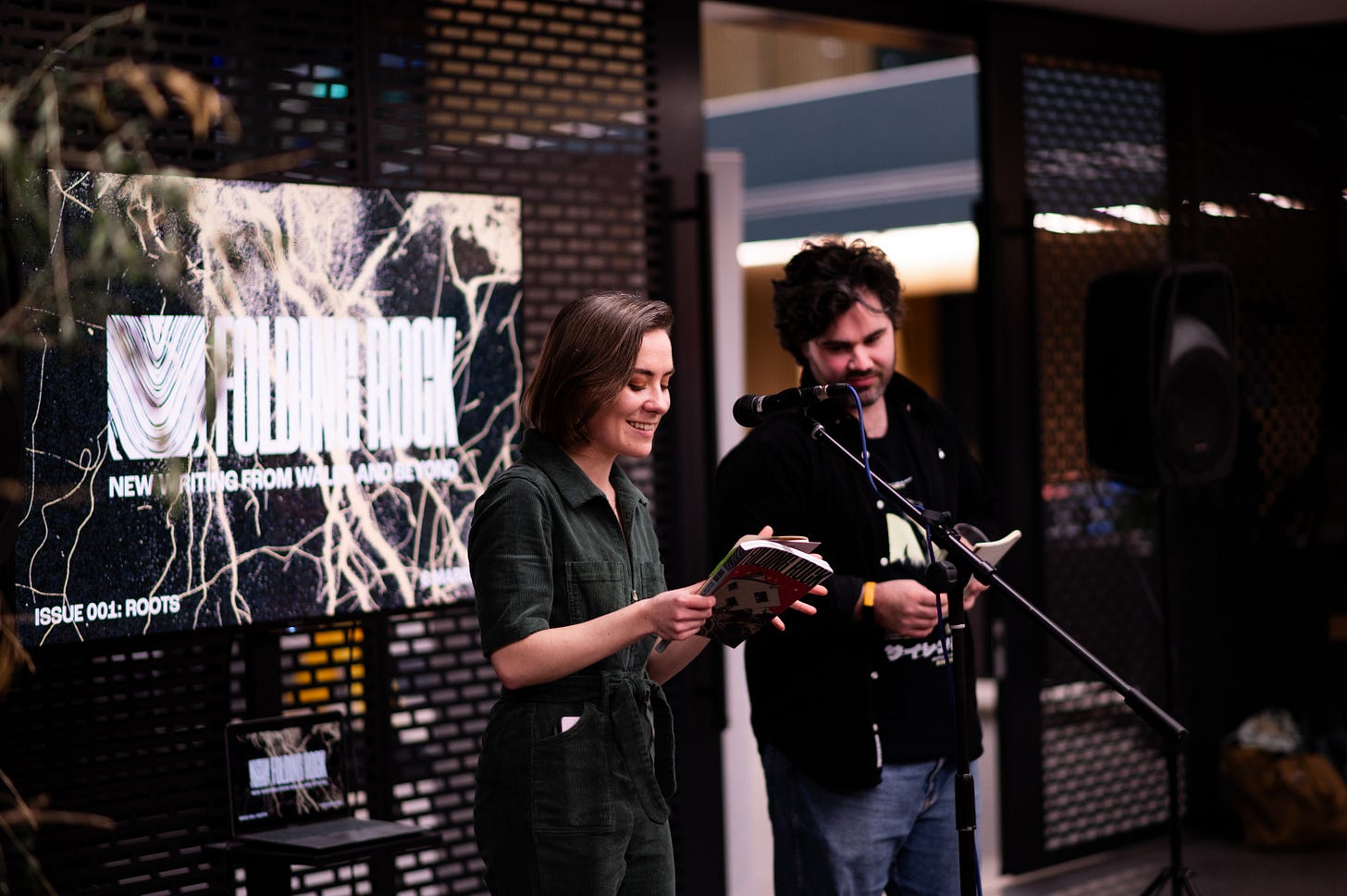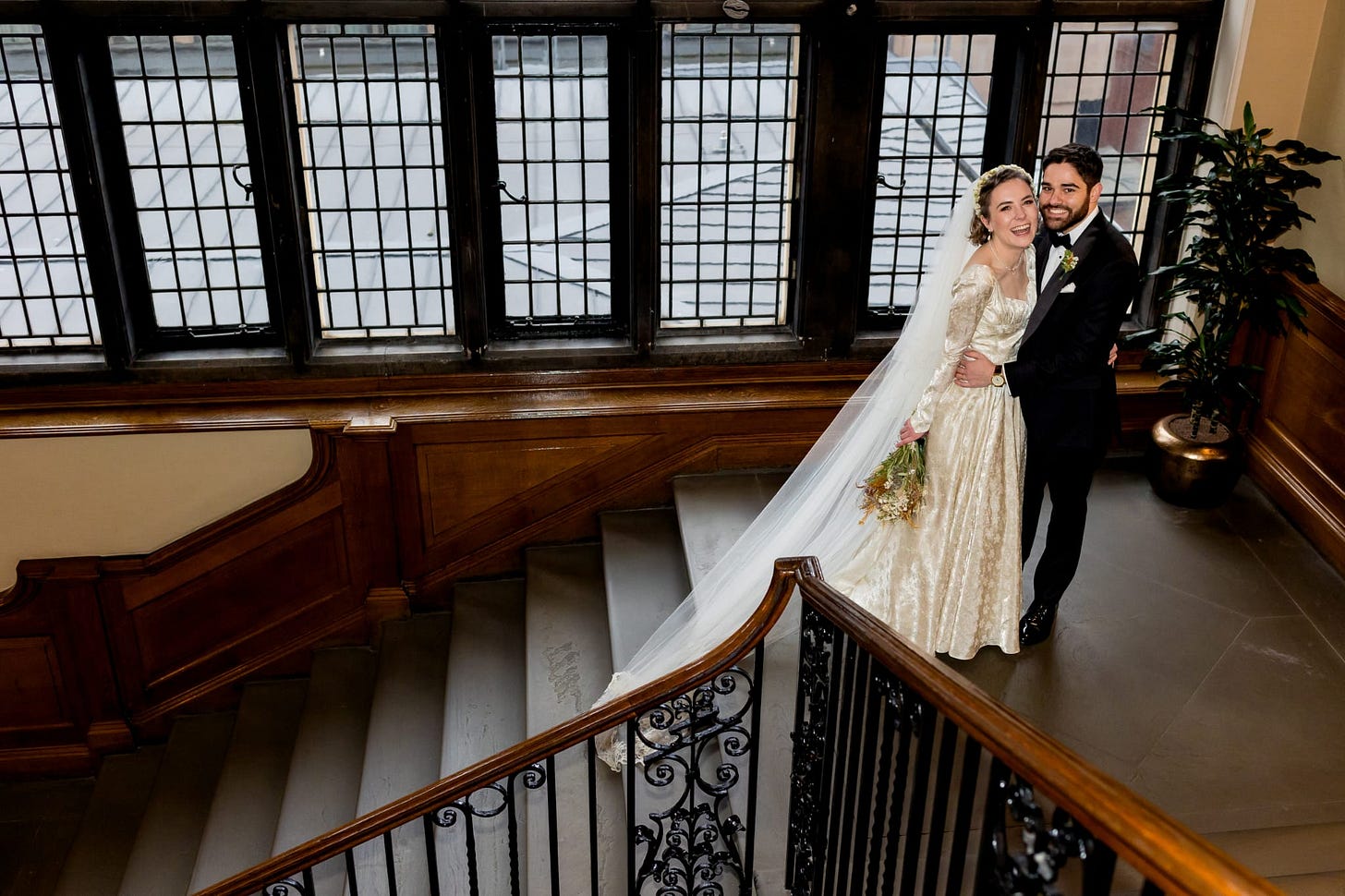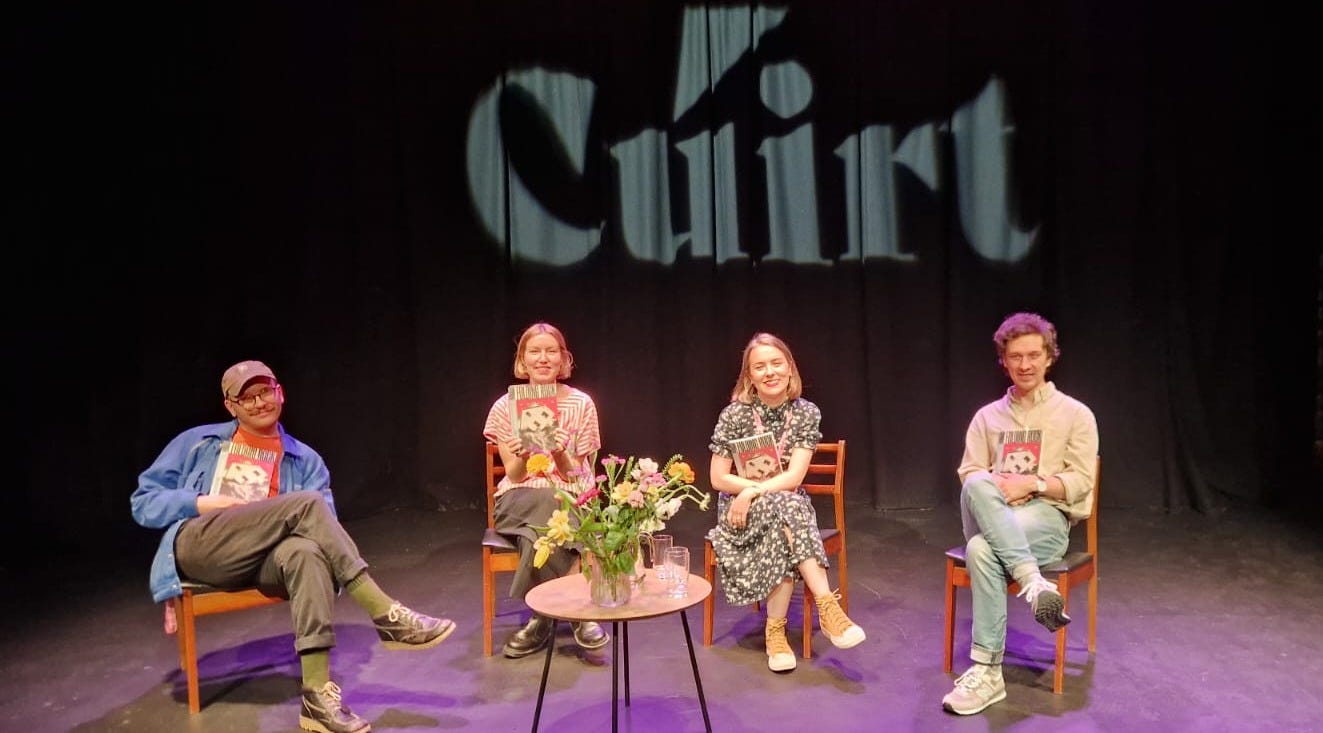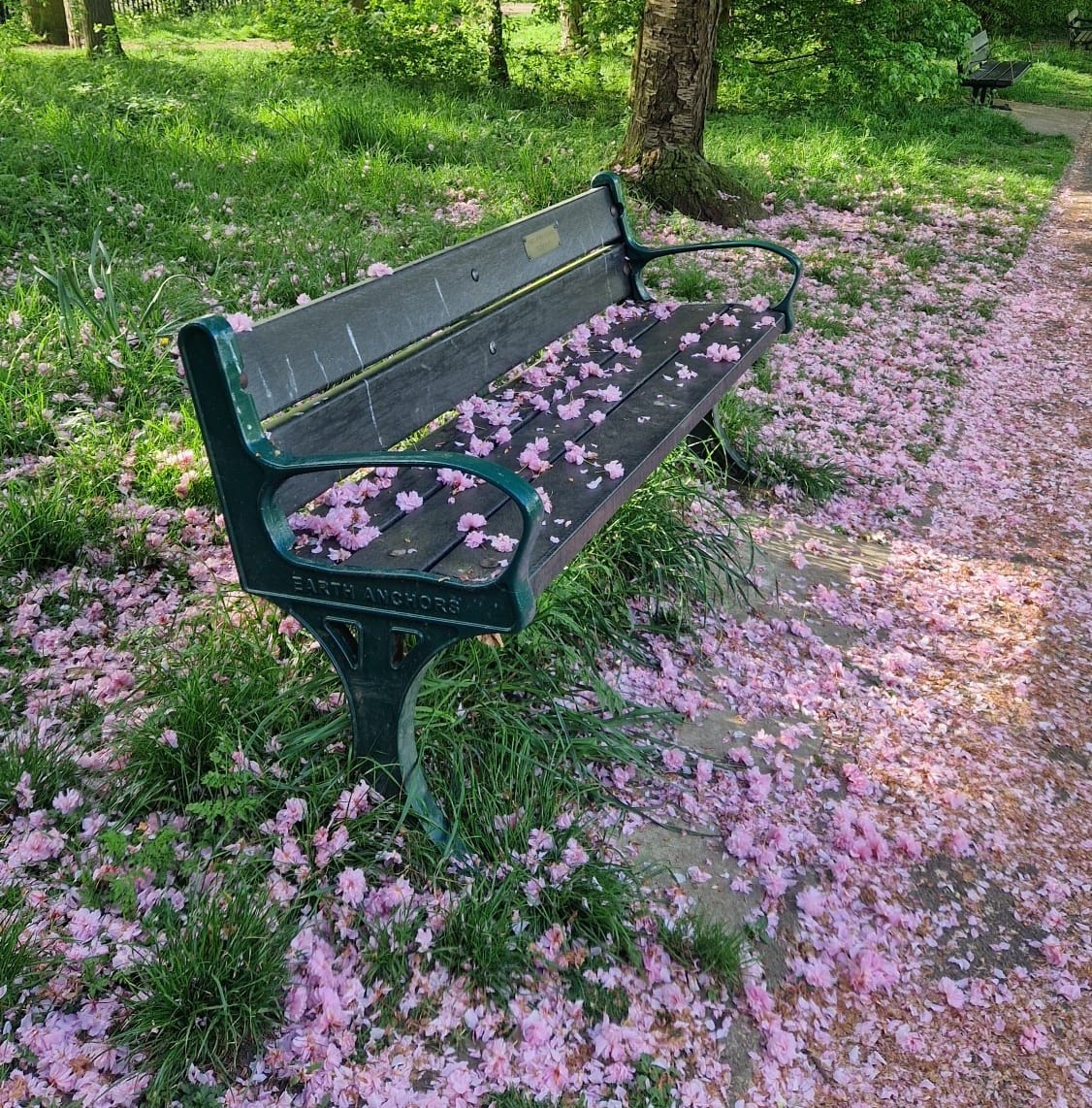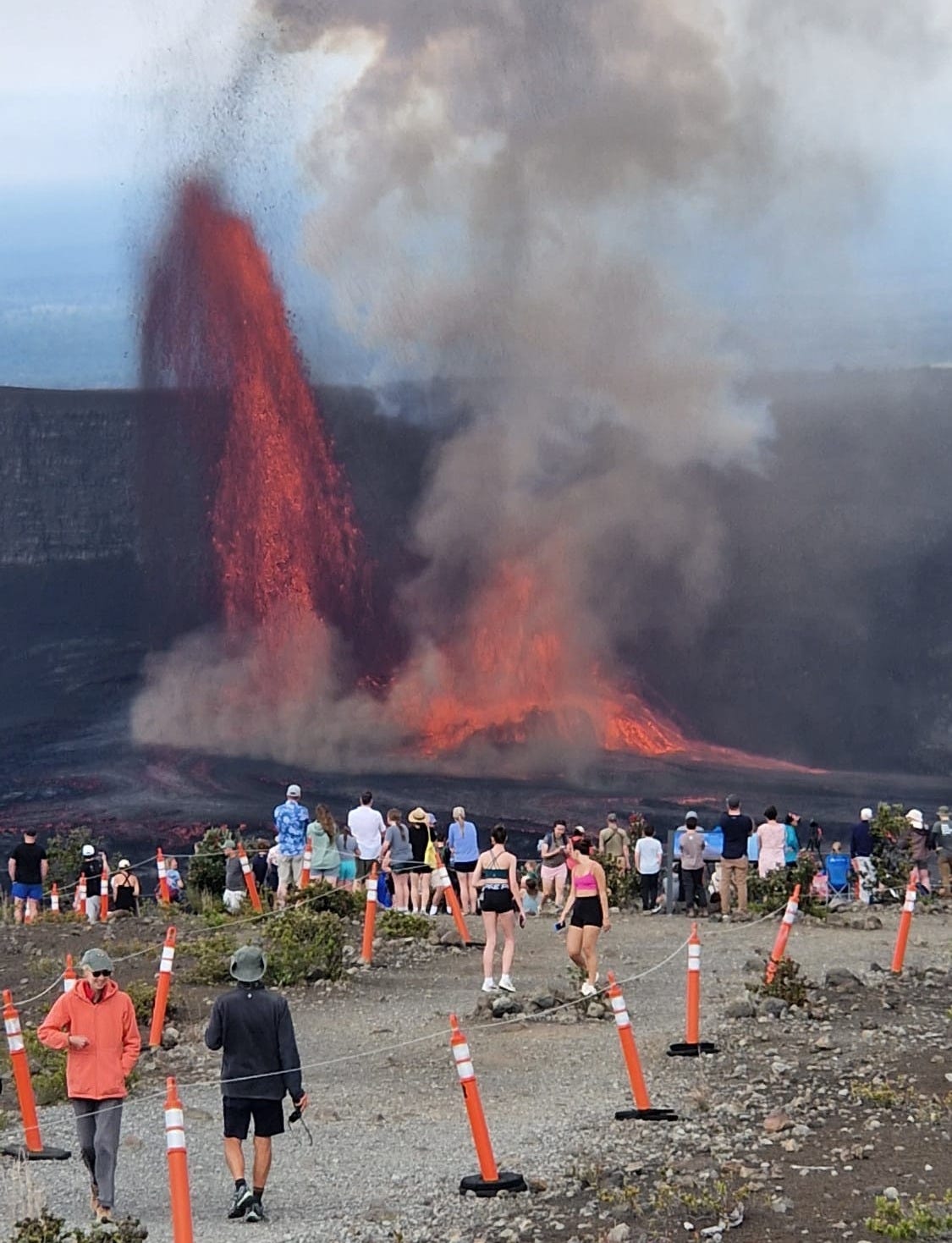Even though the sky looks strange, we drive on. Even though the clouds are pouring upwards, in a column, moving faster than we’d seen before – we drive on. The road is wide and straight and easy, our route already decided, a ribbon in royal blue, on the screen between us.
But, restless and uncertain, I twist under my seatbelt, straining around over my shoulder. The column is behind us, feeding up into a shadowy mass of overbearing cloud.
I gasp.
“My god. Andrew, I can see it.”
“What? See what?” Andrew’s eyes are strapped to the road ahead.
“I can see lava.”
A few moments, and one rapid U-turn later, we’re driving back the way we came. Back into Volcano National Park, where Kīlauea is waking up again.
[…continued down below]
Hello. How are you doing? It’s been a little while, I know.
March and April merged entirely into one for me this year, so it feels fitting that this letter – necessarily – straddles both.
I hope you’re well.
Let’s get back up to speed, shall we?
It comes like buses
In early March, Issue One of Folding Rock was launched. Almost a year since we had begun to dream this ambitious publication into something real, here it is. Holdable, beautiful, and filled with the brilliant words of some of Wales’s very best writers. Copies hit shelves, people showed up, things went wrong (including an erupting cider keg) and the whole event was a giddy, joyful whirlwind followed by a frantic dash to the end of my to-do-list… before putting on my out-of-office – and getting married.
On March 15th, with almost all of our favourite people from both sides of the Atlantic, Andrew and I decided to be husband and wife, and had a big fat party to prove it. Another giddy, joyful whirlwind which still feels a little like a fever dream – if it weren’t for the photo evidence… and dance-floor videos.
The trouble with getting married is that you have to look around a room filled with conversations that you want to be part of. Having all your loved ones in one place means you don’t have time for any of them – not in the way you are used to when you normally see them. But of course, what matters is that they are there, celebrating, and happy, just like you are. And we very much felt that. All day long.
The old fashioned way
Like many of the choices we made around our wedding (including: a stag-do the day before the big day, just a short stint with a photographer, and my own beautiful dress having been worn down an aisle before - in 1955) we decided to set off on our honeymoon pretty much straight away. Of course, this meant we had barely given our holiday plans a thought when we found ourselves checking in at Heathrow Airport and remembering all sorts of things we hadn’t packed.
Nevertheless, our two weeks in Hawai’i – on Oahu, Big Island and Maui – were incredible. We took it one day at a time and each day it just got better; filled with life-firsts and indelible moments. We came home, reluctantly, via snowy Ottawa, where we spent a few days with family, shifting closer to the right time zone. And then, just like that, we were back home: opening the door to a time capsule of our wedding aftermath. A house filled with crumpled wrapping paper, dried flower arrangements and unwashed laundry.
Back to reality… Sort of
Two days after getting back to York, I was packing my suitcase again for a trip to Galway – my first visit to Ireland. We had been invited by Cuirt Literature Festival, with the support of the Welsh govt, to speak about Folding Rock and the future of writing in Wales. Joined by the very brilliant Sophie Mackintosh (who’s Substack is a treat), Joshua Jones, and Thomas Morris, I took to the stage once again to wax lyrical about the importance of periodicals to a healthy creative ecosystem, and about why it’s time that Wales has it’s turn in the spotlight.
We stayed for a number of days in Galway, soaking up the place, the unseasonable sunshine, and the sense of excitement around literature that seemed to exude from every pub, poetry event and bookshop. The whole experience – while a little dizzying, having barely had time to face my neglected inbox – was one of inspiration and encouragement. How bolstering it was to find so much enthusiasm for our little Welsh magazine, our big ideas, from people with no national obligation to support.
Then, back on UK soil once more, I headed straight for Pembrokeshire, for some family time, focus time and yet another magazine event – this one at the National Library of Wales, in Aberystwyth. Though miserably wet (and, ironically, harder to sell than our event in Ireland…) we had a lovely evening listening to some of the brilliant words in our first issue being read by their authors.
We’ve got one more of these events coming up – this time in London – on the 8th May. Sophie Mackintosh and Joe Dunthorne will be joining us, and if you live near I would love to see you there. Expect local beer and good bookish chat.
Bluebells, guillemots and evening walks
I went for a walk after the rain had stopped the other evening – about 6.45pm, while dinner was in the oven. It wasn’t the end of the day yet: the sun came crashing back through the purple clouds, and the air, refreshed, was full of perfume. I walked through the dripping canopy of my local park, breathing deep. Fistfuls of pink blossom hung so dense that they weighed down flimsy branches, pulling closer to the ground.
It feels as though I skipped the British springtime. I left when the daffodils were in full colour, mornings still sparkled, nights still folded in before dinner. I was gone for the equinox and the clock-change. Now I’m back and the days are long, the bluebells out, the daffodils reduced to yellow rags. Out at the coast the guillemots and the razorbills will be coming in to nest.
May marks one year since I began this Substack. And what a year it’s been! In these last twelve months I have released my first collection, launched a podcast, and established a literary magazine. Alongside these letters, I have written new essays each month, sharing fresh words with my supporting readers, and enjoyed the special challenge of being in charge. The beauty of this thing is the control: deciding what I write, how, and when, and putting it out myself in the way I have imagined it.
I have high standards, and with Substack, I haven’t always had the time to meet them. And much of the time I have let the task of bringing something the new to the page swell, filling the precious days I have for my own work, to write, to chip away at something slower and bigger than the regular output of a new post.
As we move into summer, I am brim full of ideas for new writing and tempting projects. I am craving some hard work: I want to push myself. It’s been a while since I dwelt long enough in my creative brain to really meet the heart of my ideas. And so, I think, something has to give.
This first year of Dwell was meant as an experiment. A feeling-out of this kind of publication. I’ve loved it, and I’m so grateful to you for being here. I’ll be keeping up with my monthly letters - free to all - and with the rest of our This Place podcast series (another episode of that coming very soon). But I’ll be turning paid subscriptions off, at least for now, to focus on my work ‘behind-the-scenes’, so to speak. No doubt I will be sharing essays and articles when they emerge elsewhere, as well as my usual check-ins through the seasons.
In May
When I’m not working on our new garden – for which we have many ambitious plans – I’ll be travelling for a few more events. As well as the magazine party in London, I’ll be off to the Dylan Thomas Prize Ceremony to celebrate this year’s winner, and then, already it’s that time again: Hay Festival. This time last year I was there with my newly published essay collection, and now I’m heading back to chair a conversation with the very brilliant Jay Griffiths, who has written a beautiful book called Why Animals Heal Us – out in June. I’ll also be meeting this year’s Writers At Work cohort, talking to them about the magazine and encouraging them to submit.
In between all of that, I’ll be trying to get back into a normal groove. 2025, so far, has be out-of-the-ordinary, and as we reach these longest days of the year, I’d like my mornings to start with early walks in my local park, and be punctuated with quiet reading, mealtimes in the garden, and hopefully some writing, too.
Till June – enjoy the bloom of May, and maybe take some time yourself to consider where you want your energy to be. Spring is a wonderful time to make a change or resolution (much better than dreary January!), with all the light and warmth we need to encourage us onward.
With love,
KT x
P.S. Just before I hit send on this, a first swift flew past my window… Welcome back! Summer is on it’s way.
The continued essay below – along with the archive of essays on the Dwell website – is now freely available to read. Thank you so much to those who have supported my words this year by being paid subscribers!
We arrived in Volcano at night, driving into something more like jungle than the island shores we had been in before. Outside the car, I noticed a cacophony of birdsong, and when I rolled down the window it was almost deafening. What kind of birds come out in the dark? Their sound – two raindrop notes – was so polite… but repeated; sung from what must have been every branch available.
It wasn’t until the following day that I would find out this nocturnal chorus is in fact the work of a local tree frog: the coquis. So named because of their sweet ‘koh-kwee’ sound.
In the morning we packed up sandwiches and drove out, up the slopes and into the Volcano National Park. Cars crowded the roadside viewing areas, but the actual walking trails seemed empty. So we left the Steaming Bluffs behind – clouds of hot air rising from deep cracks in the ground – and decided to hike down into the crater edge of Kīlauea: one of the world’s most active volcanoes, which has been erupting in restless cycles since December.
Once, after a long descent, we finally stepped onto the crater floor (or, to be correct, the caldera floor), it felt as though we weren’t meant to be there. We were entirely alone – not a soul in sight – and the silence was unsettling. The ground beneath us, cracked, black and sparkling, was the youngest I had ever stood on. Somewhere below us – not so far below us - was a magma chamber. A pocket of the earth’s mantle; our molten planet churning with heat currents. Across the empty plain, steam was rising from deep crevices, and from the active cinder cone beyond. Nothing was stopping us from straying off this faintly-trodden trail and onto the living desert of the caldera. Its walls rose, a steep cliff, to our right, sheer enough for any viewing points to overlook us. We were alone. We walked on, along the path, drunk on the thrill of it – and all ours.
I should be clear and say that Kīlauea is a closely-monitored volcano. Its eruptions today are lava, not pyroclastic or explosive, and generally contained within its enormous crater, which grows each year as the chamber empties out and more of the outer cone collapses inwards. Andrew and I walked along an edge that, aside from some ground movement and widening cracks, hadn’t seen any meaningful activity since its most recent layer formed numerous decades ago. We stepped across a hardened lava flow of 1974. Small ferns had taken hold in certain crannies, and determined trees had begun their roots’ descent into this new land.
Eventually – reassuringly – we came to a sign that warned us not to go beyond it. DANGER: VOLCANIC ACTIVITY. The path turned away, back into the green-tangled foot of the caldera walls, and we began the long climb up again.
The next day, Andrew and I decided to visit the beach. We set up borrowed deckchairs on black rocks (laid down once upon a lava flow… like much of the rest of this amazing island) and watched as turtles swam into the lagoon, rotating fins through crystal waters, lingering on its jagged edges for their algae lunch.
On the drive back into the jungle, we checked the National Park updates for the status of Kīlauea. Eruption 15 had begun.
Our view of the volcano that evening was from a vantage point we had overheard a ranger recommending. Further away from the active zone, but angled so that you had full view of the two vents. Approaching on foot down the old road which had once circled the caldera – and since fallen into its widening mouth – we had turned a corner to see the sky alight, clouds glowing red. It was all we could do not to break into a full sprint. A live volcano! And it was actually erupting!
At the viewing area, many others were already there, phones raised to catch the spectacle beyond. A blazing orange cradle, writhing and bubbling, lava rising up and overflowing the rim. Bright channels ran down the sides of the cone, darkening as they flowed further onto the floor of the wider plain. The scene was mesmerising, and in the darkness, I became obsessed with trying to capture it on camera.
Of course, nothing came close to the thrill of being there, watching the Earth wake and stir, spilling out heat from its first formation. The sky darkened to full night, and soon the Milky Way sparkled overhead. We watched as new land grew and hardened. More island. More life, from a planet still creating and recreating itself.
Hawai’i is made up of a string of islands, each one getting smaller along its growing chain. As the tectonic plate under the Pacific moves, creeping its way around the globe, the land slides over a hotspot of activity. An island is formed – by volcanoes – and then moves on, it’s vents becoming dormant, a new one building in its wake. The crumbling edges of its soft-pumice shores begin to yield to the tides, and so each island shrinks as quickly as it grew. Hawai’i is both growing and diminishing, all at once. This – Big Island, or Hawai’i Island – is it’s youngest and largest.
It was a hard thing to tear ourselves away from Kīlauea. We left her on the promise to ourselves that we would return at sunrise, to see the work she had done in the dark. When we came back, the air was a lilac haze, steam rising in the morning light. Little was happening at the vents, beside some occasional glimpses of the lava pool: it’s gentle rise and fall. We left again, satisfied that we had been there for the climax of a new eruption – that we had witnessed something many people never will.
But now, just a few hours later, we’re driving back toward Old Crater Road once more, and the sky ahead looks like a thunderstorm on fire. I check the live updates: both vents are fountaining. Higher than any previous eruption.
“It must be high,” I say, “For us to see it over the crater wall.” Those walls, we know, are 650 feet tall.
We leave the car on a grass verge lined with other haphazard vehicles, and in a half-thought take our raincoats with us. This time we do run, jogging the kilometre or so to the viewing point.
We hear Kīlauea before we see her.
“It’s like a waterfall,” I say, breathless. “It sounds like a torrent of water.”
This time we emerge from the trees and stop in our tracks. What we’re seeing seems impossible: two geysers, one over twice the height of the other, thrusting into the sky. A steady upward throw of lava, slowing, slowing at its pinnacle, then turning, falling, a black rain of pumice back down to earth.
“This is different,” a woman says, behind us. She is local to the area. “This is bigger than the others. This is special.” We find out later, that the full height of the fountain was between 800 and 900 feet.
We move closer, and at the viewing area – still about a kilometre away from the vents themselves – we feel the heat of it on our cheeks. We also start to feel the prickle of pumice – tiny pieces of just-cooled lava landing in our hair, our hoods. I tease one from my hair and look at it closely. It shines, a cluster of hardened bubbles, more like glass than rock. We lift our hoods, grateful to have them. There have been warning messages about volcanic glass: fine-pulled threads of it which float on the air, like fiberglass. A phenomenon called Pele’s Hair.
This time, I put my phone back in my pocket, and I watch. I ignore all the laughs and conversations - and video calls - around me. A man in shorts and flipflops pulls out a conch and blows it. A little boy with curling hair moves his arms, his legs, lost in some kind of conversation with the place.
Kīlauea is, according to the Hawai'ian people here, a woman. She is the goddess Pele, rising up, in sacred rage, reminding her goddess sister of the power which she tried to vanquish. In all depictions of Pele, the lava is her plentiful hair, flowing down the mountain slopes and into the sea. The look on her face is usually one of serenity and resolution.
The man begins to sing. An old song, in Hawaiian, mournful and clearly reverent. The air, quite suddenly, tingles with respect. Here we are, alive, witnessing this miraculous display of nature’s strength. Aside from those absorbed in the endeavour of sharing what they can see, most of us are quiet. We listen. Pumice falls.
We listen to her roar.





